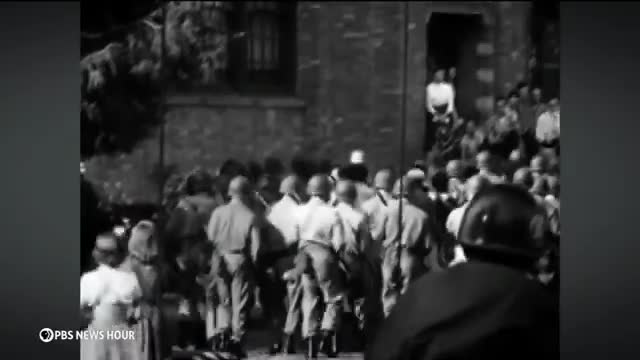Hudson Valley races could determine control of Congress
This article was created by AI summarizing key points discussed. AI makes mistakes, so for full details and context, please refer to the video of the full meeting. Please report any errors so we can fix them. Report an error »

The recent PBS NewsHour segment highlighted significant political dynamics in New York's Hudson Valley, where upcoming congressional races could determine control of the House of Representatives. With the election season in full swing, local Republicans are mobilizing efforts in traditionally Democratic areas, emphasizing the importance of these races for both parties.
Political correspondent Lisa Desjardins reported on the competitive landscape, particularly focusing on the race between freshman Republican Congressman Mike Lawler and former Congressman Mondaire Jones, a Democrat. This district, which voted for President Biden by a notable margin, is seen as a critical battleground. Lawler's campaign is bolstered by his reputation as a diligent representative, while Jones faces scrutiny over past comments regarding police reform, which he has since clarified.
The segment also explored broader themes affecting voter sentiment, including economic concerns, abortion rights, immigration, and LGBTQ issues. The atmosphere in the region is described as increasingly polarized, with voters expressing frustration towards both major parties. This sentiment is echoed by local residents who feel disillusioned with the political climate, particularly in light of national figures like Donald Trump and Kamala Harris.
In Montana, voters are set to decide on two significant ballot measures aimed at reforming the state's electoral process. These proposals include implementing nonpartisan primaries and requiring majority winners in general elections. Advocates argue that these changes could reduce polarization and encourage candidates to appeal to a broader electorate, while critics warn against altering a system they believe functions well.
As the election approaches, the outcomes of these races and ballot measures could have profound implications for governance and representation at both state and national levels. The stakes are high, with both parties keenly aware that the results could reshape the political landscape in the coming years.
Political correspondent Lisa Desjardins reported on the competitive landscape, particularly focusing on the race between freshman Republican Congressman Mike Lawler and former Congressman Mondaire Jones, a Democrat. This district, which voted for President Biden by a notable margin, is seen as a critical battleground. Lawler's campaign is bolstered by his reputation as a diligent representative, while Jones faces scrutiny over past comments regarding police reform, which he has since clarified.
The segment also explored broader themes affecting voter sentiment, including economic concerns, abortion rights, immigration, and LGBTQ issues. The atmosphere in the region is described as increasingly polarized, with voters expressing frustration towards both major parties. This sentiment is echoed by local residents who feel disillusioned with the political climate, particularly in light of national figures like Donald Trump and Kamala Harris.
In Montana, voters are set to decide on two significant ballot measures aimed at reforming the state's electoral process. These proposals include implementing nonpartisan primaries and requiring majority winners in general elections. Advocates argue that these changes could reduce polarization and encourage candidates to appeal to a broader electorate, while critics warn against altering a system they believe functions well.
As the election approaches, the outcomes of these races and ballot measures could have profound implications for governance and representation at both state and national levels. The stakes are high, with both parties keenly aware that the results could reshape the political landscape in the coming years.
View full meeting
This article is based on a recent meeting—watch the full video and explore the complete transcript for deeper insights into the discussion.
View full meeting